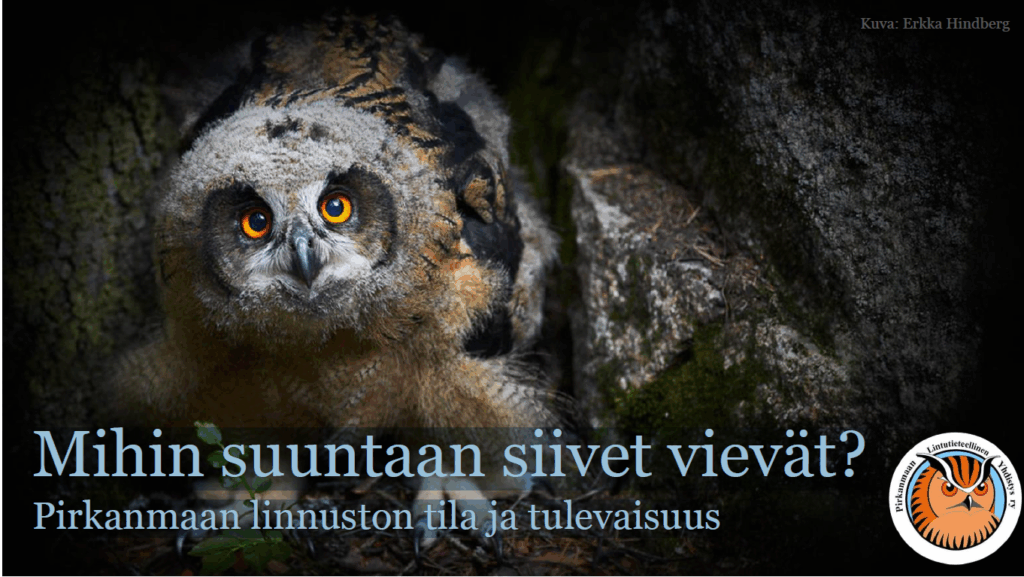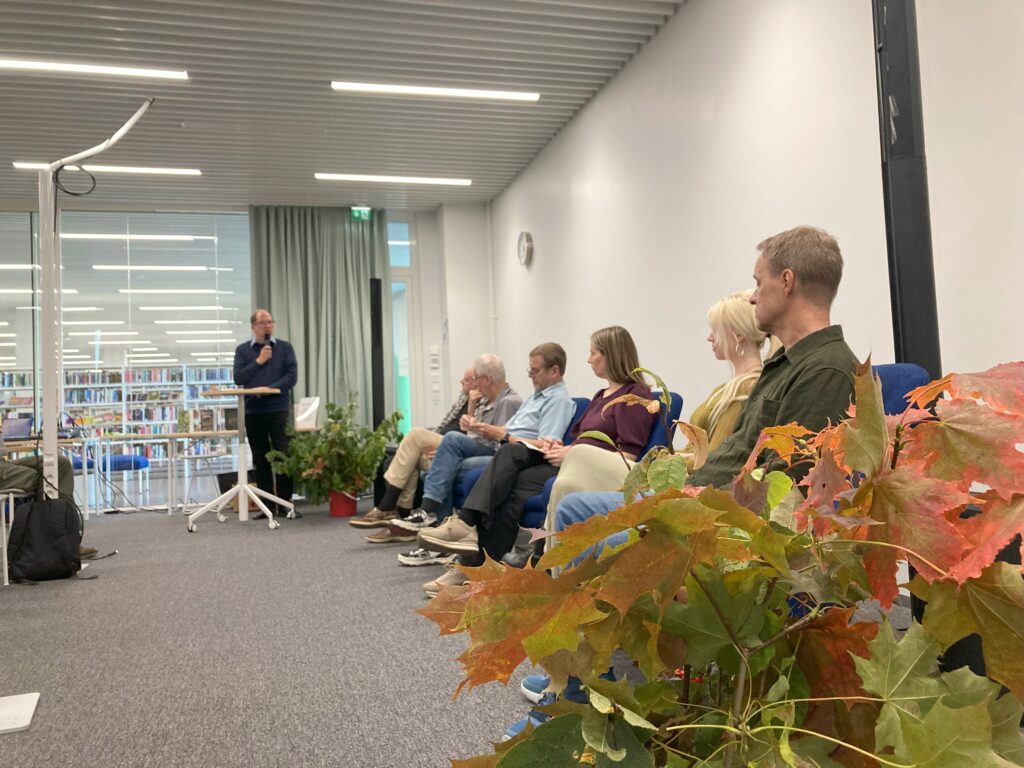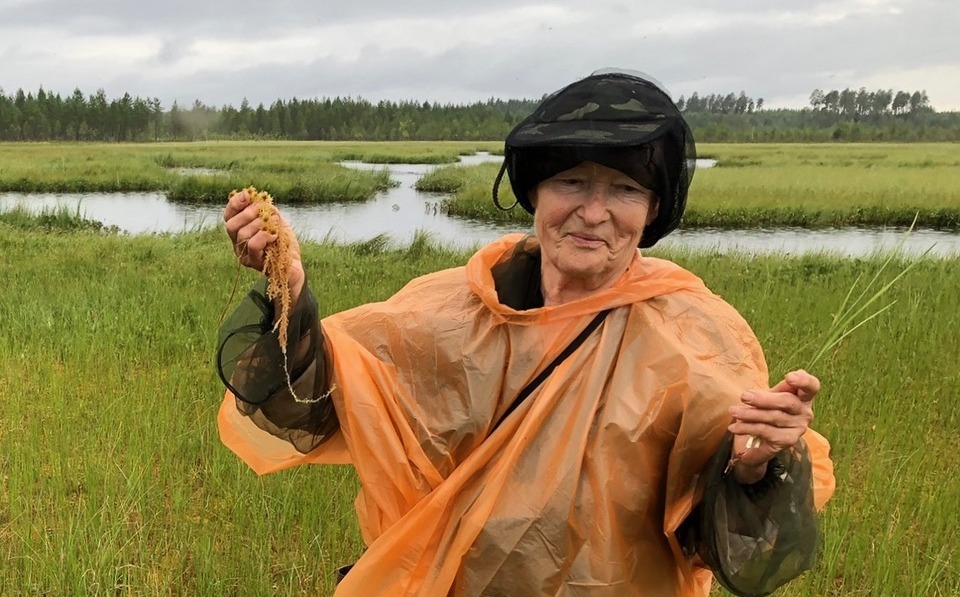Lumoava luontoretki Seitsemiseen / Enchanted at Seitseminen
–
Koveron perinnetila / Kovero crown tenant farm Kotouttavaa luonnonhoitoa Pirkanmaalla (Kolu) -hanke järjesti kesäkuussa luontoretken Seitsemisen kansallispuistoon. See full text in English below. Matkamme kohti Seitsemisen kansallispuistoa alkaa Tampereelta Marhaban-keskukselta….
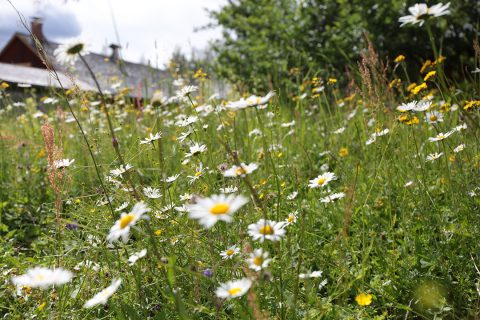
Kotouttavaa luonnonhoitoa Pirkanmaalla (Kolu) -hanke järjesti kesäkuussa luontoretken Seitsemisen kansallispuistoon. See full text in English below.
Matkamme kohti Seitsemisen kansallispuistoa alkaa Tampereelta Marhaban-keskukselta. Bussimatkaa emännöi hanketyöntekijä Ritva Pietarinen ja oppaanamme toimii Kaija Helle Suomen luonnonsuojeluliiton Nokian yhdistyksestä.
Ensimmäinen pysähdyspaikkamme on Seitsemisen luontokeskus. Näyttelyssä tutustumme suomalaisen luonnon kasvi- ja eläinlajeihin. Miksi Suomessa on kahden värisiä oravia? Minkä kokoinen lintu korppi on? Kaija vastailee tottuneesti osallistujien kysymyksiin. Kierroksen jälkeen nautimme herkullisen keittolounaan luontokeskuksella.
Aikahyppy menneeseen
Jatkamme retkeä Koveron perinnetilalle. Lempeä savun tuoksu, joka tuo mieleen lapsuusmuistoja, ottaa meidät vastaan. Pyykkäri, vihdantekijä ja savusauna ovat pihapolun varrella. Näemme, miten vaatteet ennen pestiin – pyykkilaudan ja itsekeitetyn saippuan avulla.
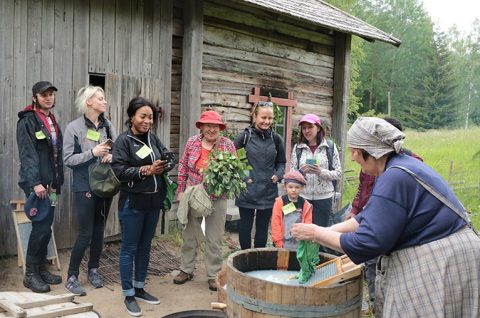
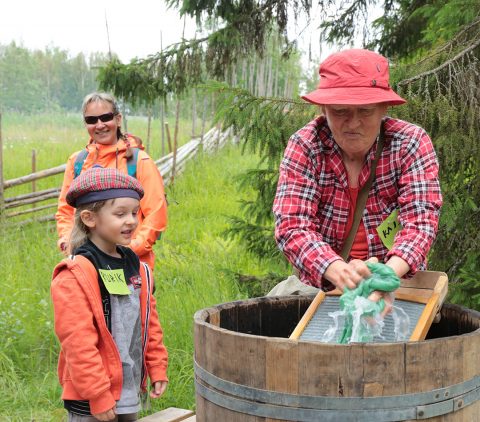
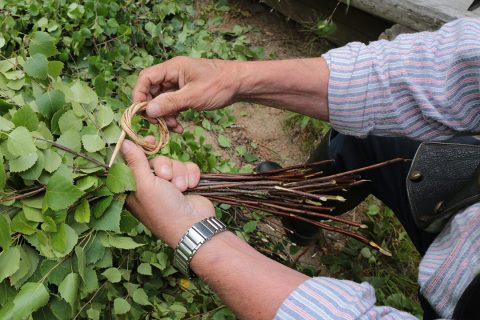
Koveron torppa perustettiin 160 vuotta sitten. Ensimmäinen torppari 1800-luvulla oli Matti. Vanhin edelleen pystyssä oleva rakennus on tuolta ajalta. Seuraava isäntä, Matti hänkin, rakensi ison päärakennuksen. Ikää komealla päärakennuksella on 140 vuotta. Torppari majoitti parhaimmillaan 40 metsätyömiestä koko talven ajaksi, tilaa talossa tarvittiin. Matin poika Anania jatkoi tilalla omavaraista maataloutta. 1970-luvulla tila myytiin valtiolle.
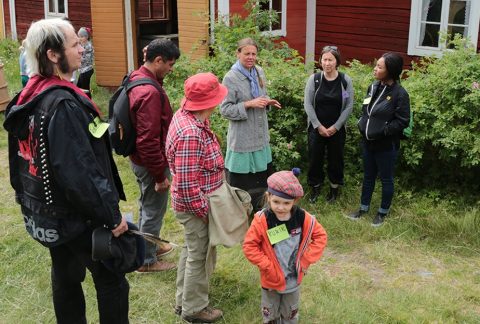
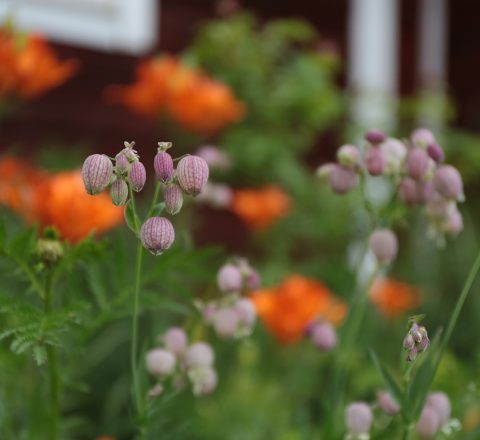
Tänä päivänä Koverossa ylläpidetään kulttuuriympäristöä ja hoidetaan luontoa monin keinoin. Metsähallituksen luontopalveluiden ja Suomen luonnonsuojeluliiton Pirkanmaan piiri ry:n yhteistyönä on muun muassa tehty riukuaitoja ja pärekattoja, maalattu rakennuksia, niitetty pientareita sekä ennallistettu koski, metsiä ja soita. Myös uhanalaisten lajien esiintymiä on hoidettu sekä poltettu tervaa. Toimia on tehty Kaija Helteen mukaan 1990-luvulta saakka.
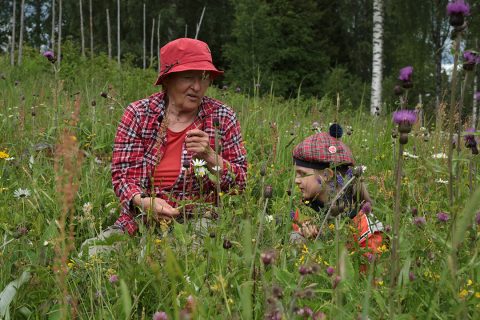
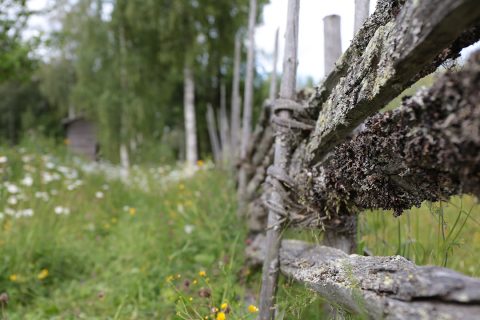
Retkipäivänämme Koverossa on lasten perinnepäivä, ja monenlaista nähtävää riittää. Pääsemme kurkistamaan kädentaitajien työskentelyä.
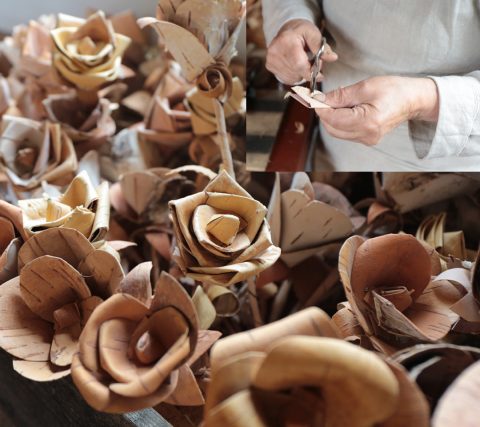
Outi-Leena on varannut ryhmällemme pieniä tilantöitä. Kasvimaata kitketään ja maahan istutetaan kessun taimia. Rakennusten ympäristöjä niitetään.
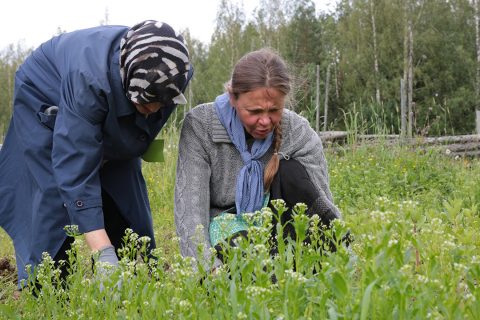
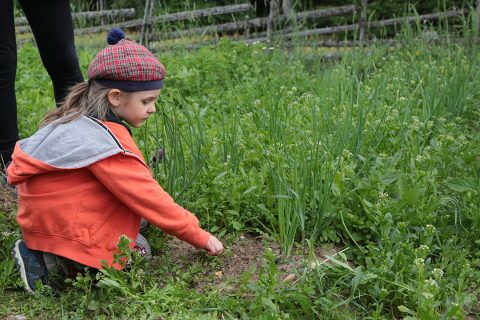
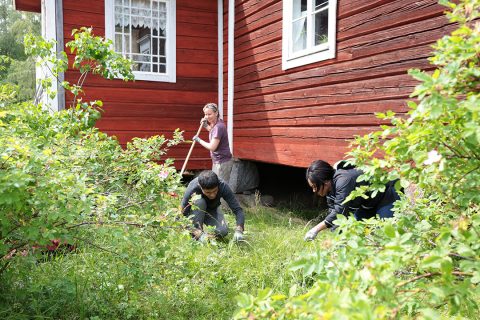
Koskematon aarnimetsä
Siirrymme Multiharjulle ja lähdemme kulkemaan metsän siimeksessä mutkittelevaa aarnipolkua. Kaijan kertomana kuulemme luonnosta ja metsän historia herää eloon. Vanhoissa metsissä luonnonkiertokulku on tasapainossa, jokaisella on ketjussa oma tärkeä tehtävänsä. Kaatunut puu muuttuu aikojen saatossa kääpien, kovakuoriaisten, sienien ja mikrobien hajottamana takaisin maaksi.
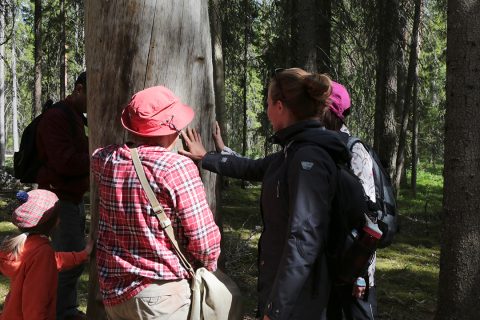
Kilpikaarnaiset männyt seisovat jykevästi, metsäpaloistakin kuorensa turvin selvinneinä. Sileiden kelopuiden pinta on kovakuoriaisten kaivertamaa. Rahkasammaleelle on keksitty ennen paljon hyötykäyttöä. Se on toiminut rakennusten eristeenä, patjojen täytteenä, kuivikkeena vaipoissa ja karjalla, veden puhdistamisessa sekä luonnonlääkkeenä haavojen hoidossa.
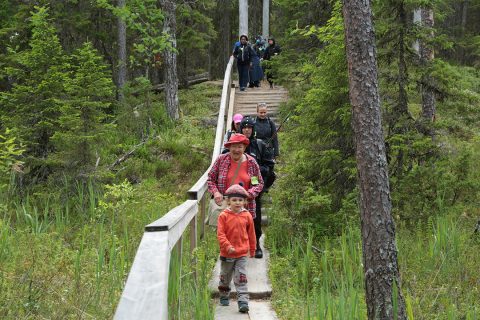
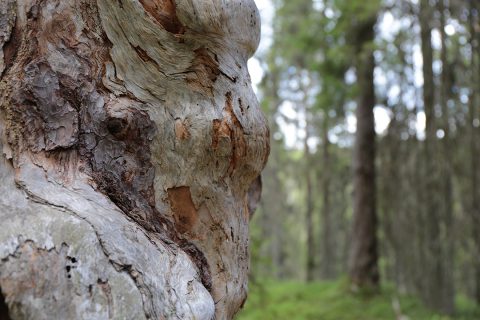
-Tuli hyvä ja kotoisa olo, kun pääsi metsään.
-Hienoa nähdä vanhoja puita.
Monipuolinen päivämme on ohi, ja matkaamme vehreiden maalaismaisemien halki takaisin Tampereelle. Toiveita päästä uudelleen luontoretkelle löytyy jokaiselta matkalaiselta. Kolu-hankkeen ja Suomen luonnonsuojeluliiton Pirkanmaan piiri ry:n tulevia tapahtumia kannattaakin seurailla ja lähteä rohkeasti mukaan!
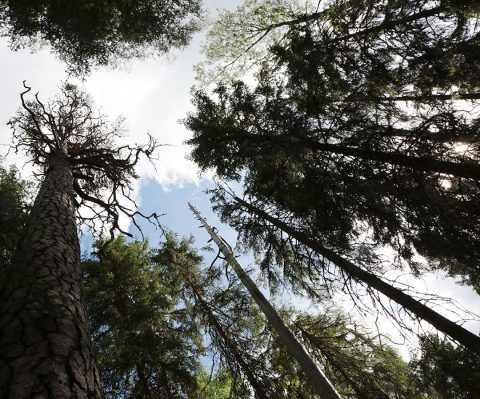
Teksti ja kuvat: Niina Riikka Ylönen
Enchanted at Seitseminen
The Integration by nature conservation (Kolu) -project organised a nature tour to the Seitseminen National Park in June.
We begin our tour from the Marhaban-centre in Tampere. We are accompanied in the bus by project staff Ritva Pietarinen and nature guide Kaija Helle, who is active in the Nokia chapter of the Finnish Association for Nature Conservation.
After arriving at the Seitseminen National Park we first stop at the Nature Centre. A tour of the exhibition gives us a chance to learn about Finnish flora and fauna. Why do the squirrels in Finland come in different colours? How big is a raven? Kaija has all the answers for the group. Later we eat a delicious lunch at the Nature Centre restaurant.
Time travel at the Kovero farm
At the Kovero crown tenant farm a soft smell of smoke wafts in the air and brings back childhood memories. Along the path to the house we see a smoke sauna, a laundress at work and a man tying fresh twigs of silver birch into a tight bunch called ’vihta’, a bath wisk used in the sauna. The laundress shows us how laundry was done in past – with home-made soap and a washing board.
The Kovero Crown tenant farm was established 160 years ago. The first farmer in the 17th century was called Matti. The oldest building on the farm dates from his time. The next farmer, also called Matti, built the large main house, which is now 140 years old. Plenty of space was needed when the main house was used to lodge up to 40 forestry workers during winters. Anania, Matti’s son, continued running the farm in times when farms were still self-sufficient. The farm was sold to the state in the 1970’s.
Today the cultural heritage of Kovero and the surrounding nature are maintained in many ways. The Parks & Wildlife Finland services of the forest administration and the Finnish Nature Conservation Association Pirkanmaa have jointly organised the building of traditional roundpole fences and wood shingle roofs, painting of the buildings, maintenance of the farmland and restoration of forests, rapids and bogs. Endangered plant species have been protected and even traditional tar making practises revived. According to Kaija Helle, different types of conservation activities have been carried out since 1990’s.
The Kovero farm annual Children’s Heritage Day coincided with our visit. We had the pleasure to follow many traditional craftsmen and women at work. Outi-Leena gave us some easy farm work to do. We weeded the kitchen garden and planted tobacco seedlings. We also used sickles to cut the grass around the buildings.
Deep in an old forest
We head to the Multiharju old-growth forest and walk along the meadering forest path. Kaija’s stories make the forest nature and history come alive. We learn about the succession of old-growth forests and the parts different organisms play. A fallen tree is gradually returned to the soil with the help of polypores, beetles, funghi and microbes.
Large, old pines survive even wildfires thanks to their thick bark. Dead trees that have shedded their bark are smooth to the touch despite the network of corridors carved in the wood by beetles. The forest abounds with spaghnum moss, which has had many uses in the times past. It has been used as insulating material in buildings, filling in mattresses, absorbent in diapers, bedding for cattle and also to purify water and to treat skin cuts.
-When we walked in the forest, I felt good and at home.
-I love looking at the old trees.
After a fulfilling day we head back to Tampere across the verdant countryside. Many participants express a wish to go on a nature tour again. The Kolu-project and Finnish Nature Conservation Association Pirkanmaa organise events throughout the summer – welcome along!
Text and photographs: Niina Riikka Ylönen
Translation: Ritva Pietarinen
